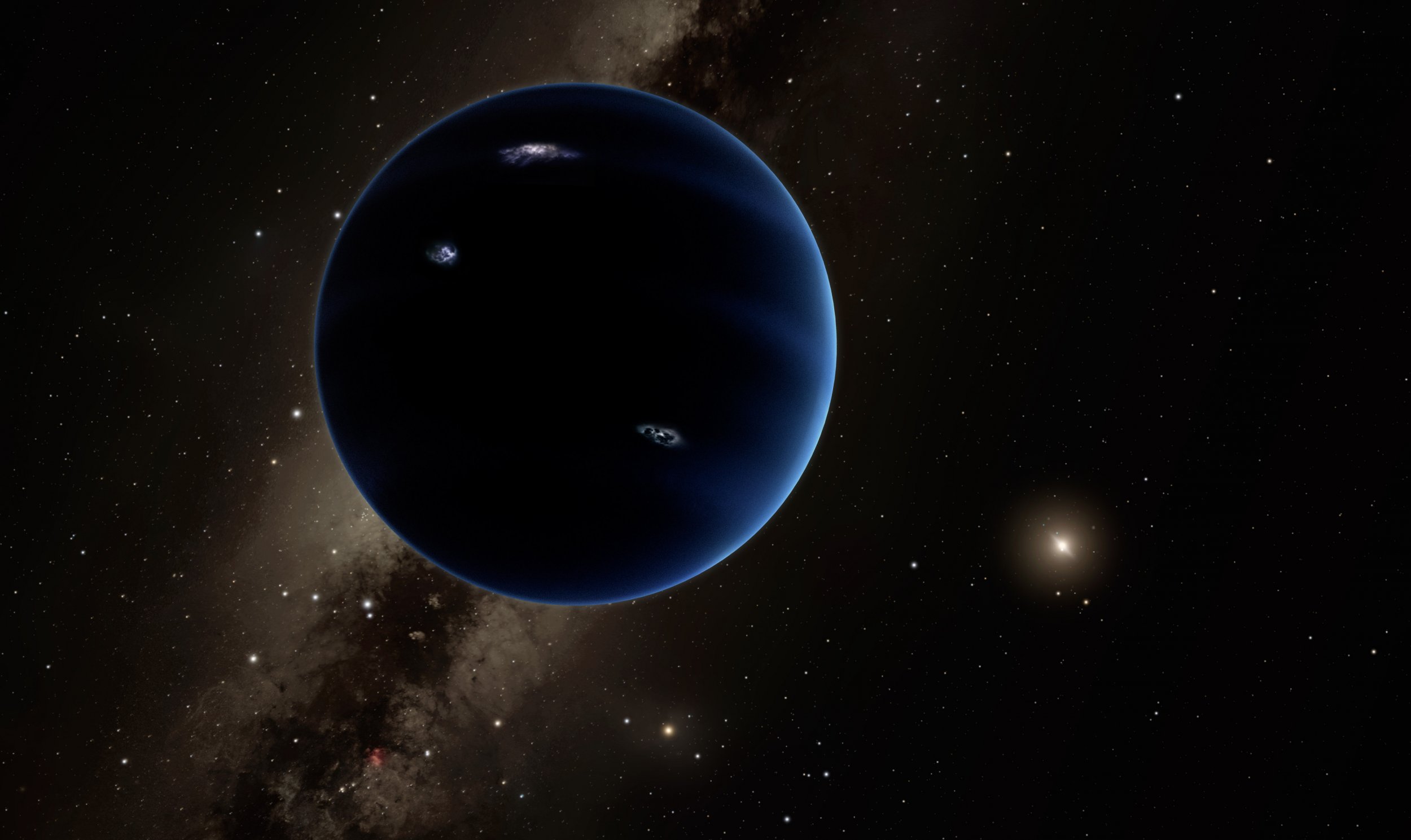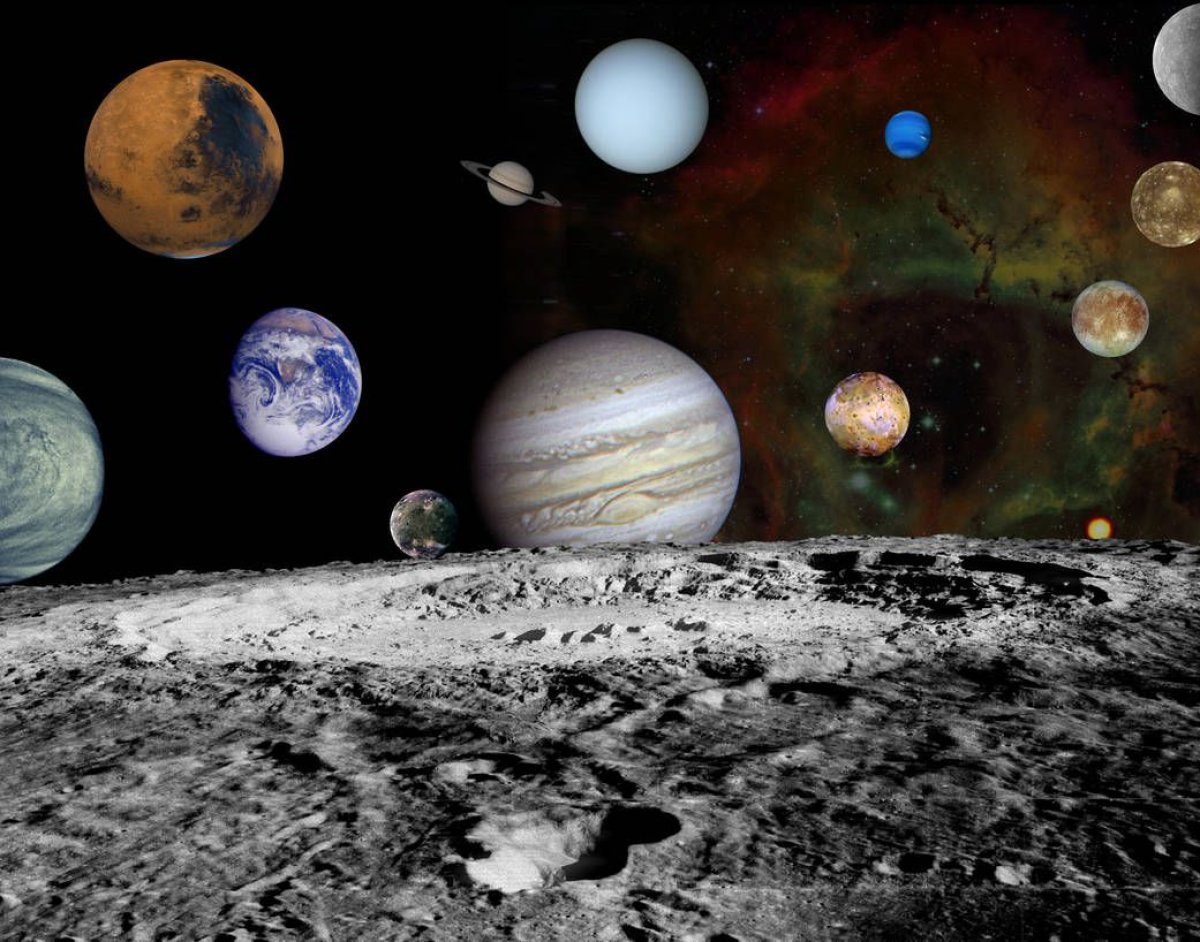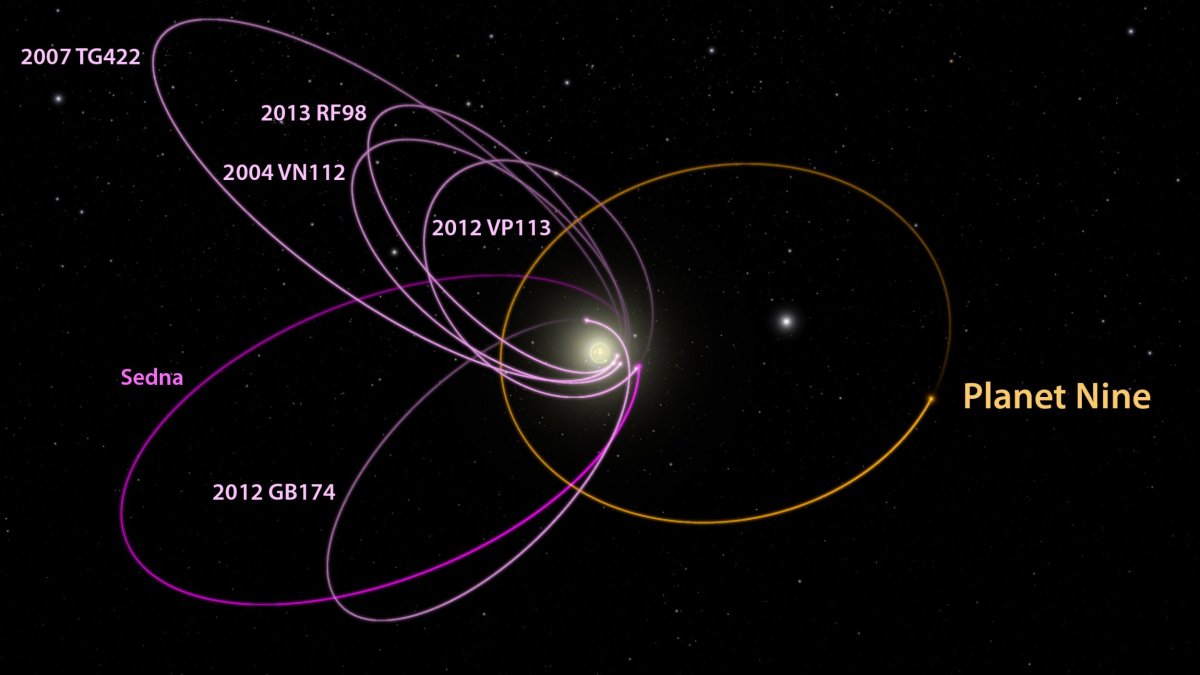
Scientists believe there may be a huge planet sitting at the far reaches of the solar system. Since new evidence of Planet 9's existence emerged a few years ago, experts have been weighing in on how it might have ended up in its distant orbit. One of the most popular explanations is that it was stolen by the sun in an interstellar takeover 4.5 billion years ago.
Now a team of researchers from the U.K. and Switzerland have largely ruled out this hypothesis, with their calculations showing the probability that Planet 9 was captured by the sun in this way is "almost zero."
Planet 9 and the Weird KBO Orbits
The idea of a ninth planet existing at the edge of the solar system, far beyond Neptune, was put forward in 2014. Two years later, researchers from the California Institute of Technology discovered that several objects in the Kuiper Belt—a vast shell of icy bodies surrounding the solar system—were traveling along orbital paths that could be explained by the presence of a massive planet.
Mike Brown, one of the scientists involved in the study, said at the time, "This would be a real ninth planet. There have only been two true planets discovered since ancient times, and this would be a third. It's a pretty substantial chunk of our solar system that's still out there to be found, which is pretty exciting."
Researchers estimated the planet would have to have a mass about 10 times that of Earth. On average, it would take between 10,000 and 20,000 years to make one orbit of the sun.
How Did It Get There?
If there is a giant undiscovered planet at the edge of the solar system, how did it end up there? In April 2016, scientists led by Alexander Mustill, from Sweden's Lund University, said their computer simulations indicate Planet 9 is an exoplanet, a planet from outside our solar system.

Early on in the formation of the solar system, about 4.5 billion years ago, Planet 9 belonged to another star, orbiting at the outer edges where the gravitational force was weak. As it brushed past our own system, our sun's gravitational pull was stronger than Planet 9's host star.
As the planet's former star moved away from our own, Planet 9 got stuck in an orbit around the sun.
Low Probability
In the new study, researchers looked at the stolen exoplanet hypothesis to work out the probability of this happening. By running computer simulations, the researchers showed that only 1 to 6 percent of free-floating planets (like Planet 9) are ensnared by stars, "even with the most optimal initial conditions for capture."
They found that just five to 10 of the 10,000 planets simulated were captured into orbits that would fit within the constraints required for Planet 9 to have ended up in its supposed position. However, when they put in constraints relating to the formation of the solar system in general, they found "the probability for the capture of Planet 9 to be almost zero."
The Mystery Continues

Dimitri Veras, from Britain's University of Warwick, who was not involved in the study, says the findings largely rule out the idea that Planet 9 is a hijacked exoplanet. He tells Newsweek another plausible explanation is that it started life near the sun but was pushed out over time.
"Planet 9 could have formed close to the sun like the other planets. Then, however, while the solar system was young and dynamically active, gravitational interactions could have scattered Planet 9 to the outer regions of the solar system on a stable orbit," he says. "Over the subsequent several billion years, this orbit would have been slightly perturbed by passing stars, but not enough to scatter it out of the system nor inward toward the giant planets."
Scientists will not be able to confirm the existence of Planet 9 without actually detecting it. Scientists are currently surveying the sky but so far have found nothing. They are also looking for more Kuiper Belt Objects like those found by the Caltech team in 2016.
"If more Kuiper Belt Objects are discovered which have clustered orbital elements, then the suggestion for Planet Nine's existence becomes stronger, and constraints on the location of Planet Nine would improve," Veras says. "The mystery will be solved only if we find Planet 9, because our detection capabilities for such far-away objects are limited. If the object is small enough, dark enough and far away enough, then we won't find it with current technology, and we will just have to wait."
Uncommon Knowledge
Newsweek is committed to challenging conventional wisdom and finding connections in the search for common ground.
Newsweek is committed to challenging conventional wisdom and finding connections in the search for common ground.
About the writer
Hannah Osborne is Nesweek's Science Editor, based in London, UK. Hannah joined Newsweek in 2017 from IBTimes UK. She is ... Read more
To read how Newsweek uses AI as a newsroom tool, Click here.








